Yot is the weekend, but the classroom is full of children bearing green and red batons and adorned with scarves and ribbons. In the town of Toribio, in south-west Colombia, the Indigenous Guard is teaching their children how to avoid being recruited into militias, and defend their lands in Cauca province, notorious as one of the country’s most turbulent.
The colors they carry represent “green for mother nature and red for the blood shed by our elders”, says Angie Barrera, 11.

-
A child’s baton rests against the wall of her house, and, right, a Nasa shaman douses Angie Barrera with a tincture of aromatic plants, which he says is to keep the children safe
“The guard is important because they’re in charge of making sure the government or armed groups don’t come here to take over, or kill us,” she says. “They help to defend mother nature, our lives, children and the community.”
The guard – Kiwe Thegnas in Nasa Yuwe language – was established 20 years ago in Cauca during the most intense years of Colombia’s civil conflict. Its more than 30,000 members pledge non-violence and do not carry weapons.
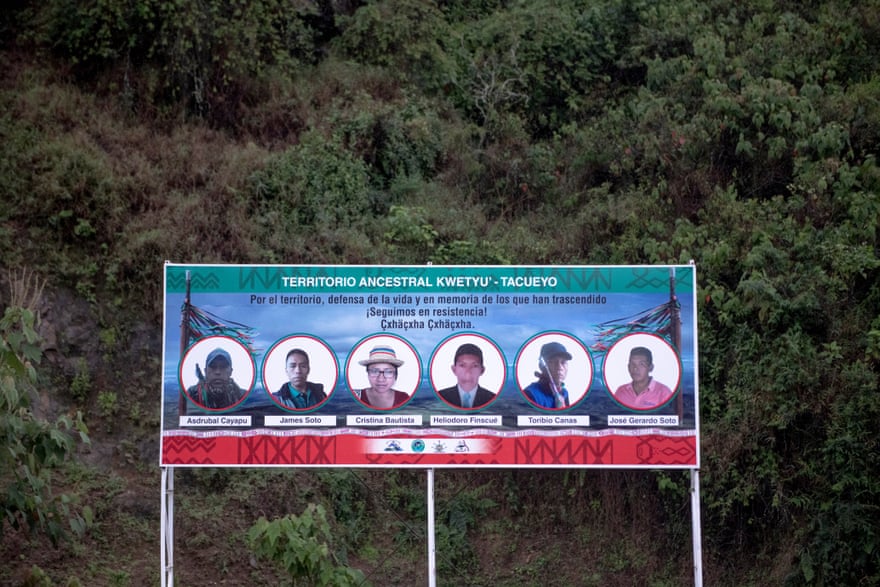
-
A sign in the village of Tacueyó, near to where, in October 2019, five members of the Indigenous Guards, including governor Cristina Bautista were murdered by dissidents known as the Dagoberto Ramos Mobile Column
But today, their struggle in their autonomous territories is more challenging than ever. despues de the 2016 deal struck with the government of president Juan Manuel Santos, some rebel Farc fighters splintered off into dissident groups, which are rife in Cauca, and continue to recruit young Indigenous people into their ranks. Other criminal groups use Nasa autonomous lands to plant marijuana or coca crops – the raw ingredient of cocaine – or illegally mine for gold.
At night, the powerful lights of vast marijuana plantations illuminate the mountains around Toribío.
One of the guard’s main activities is to protect against armed groups in their territories, at times they will also destroy coca fields, risking direct confrontation with the gangs. Recently, incidents have become more violent.
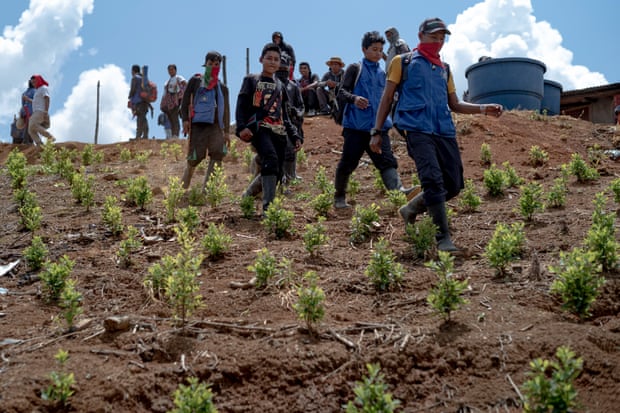
-
Young Indigenous Guards in a recently planted coca field near Las Delicias, Cauca province. In recent years, this part of the Andes has been seen to rise in the cultivation of coca, the leaves of which are used to make cocaine
A 2021 reports by Bogotá thinktank Indepaz claims at least 611 environmental defenders have been killed since the signing of the 2016 peace deal. Of these, 332 were Indigenous, the report said, and 204 took place in Cauca.
This year, 32 Indigenous people, including four members of the guard, have been killed in Cauca, according to Juan Camayo Diaz, coordinator of the Fabric for the Defense of Life, a human rights group.
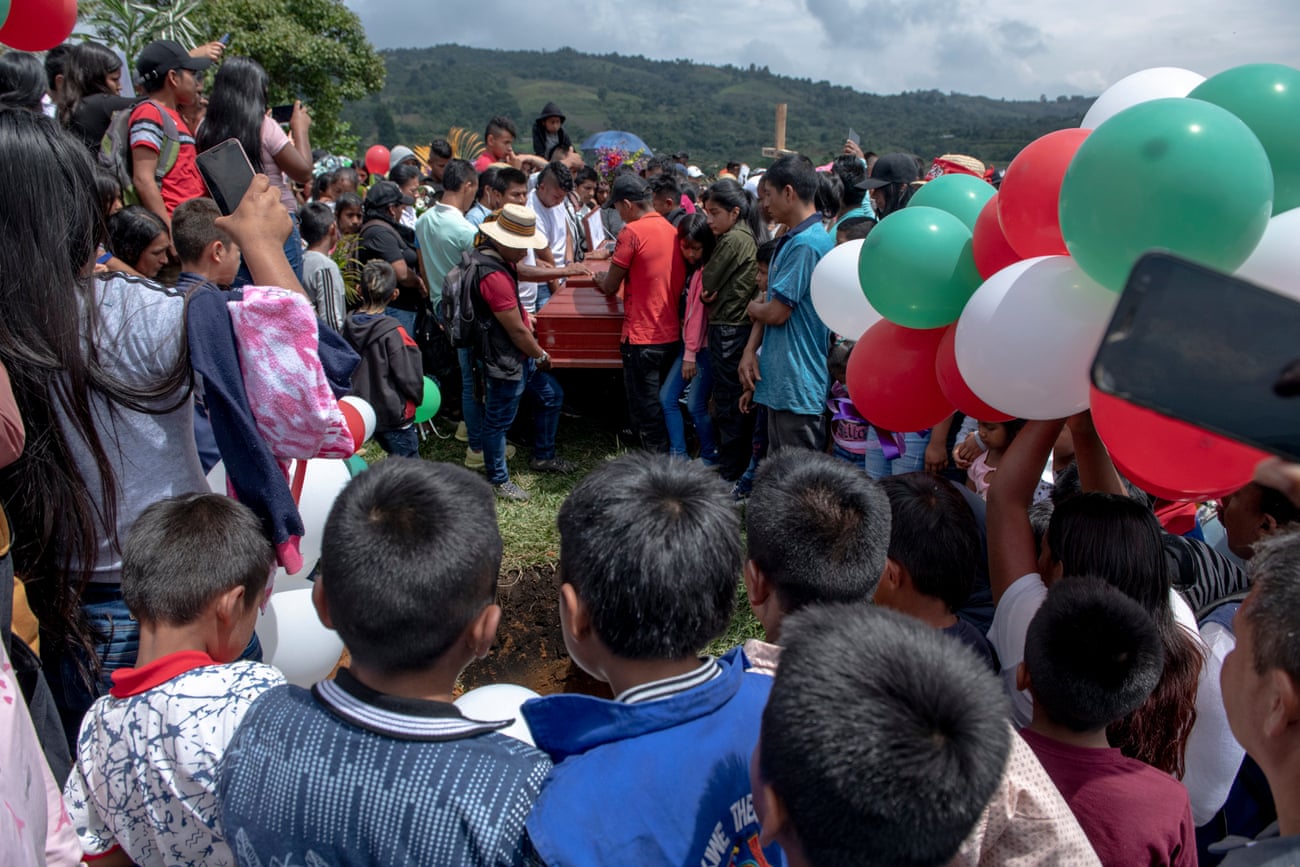
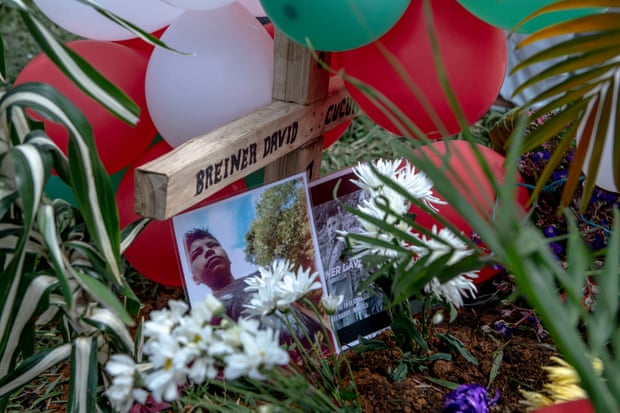
The killing of 14-year-old guard member Breiner David Cucuñame, shot dead when dissidents opened fire in his village on 14 January, caused horror nationwide.
A week after Cucuñame’s death, José Albeiro Camayo, a renowned guard leader, was killed by dissidents near Las Delicias, sparking further outrage.
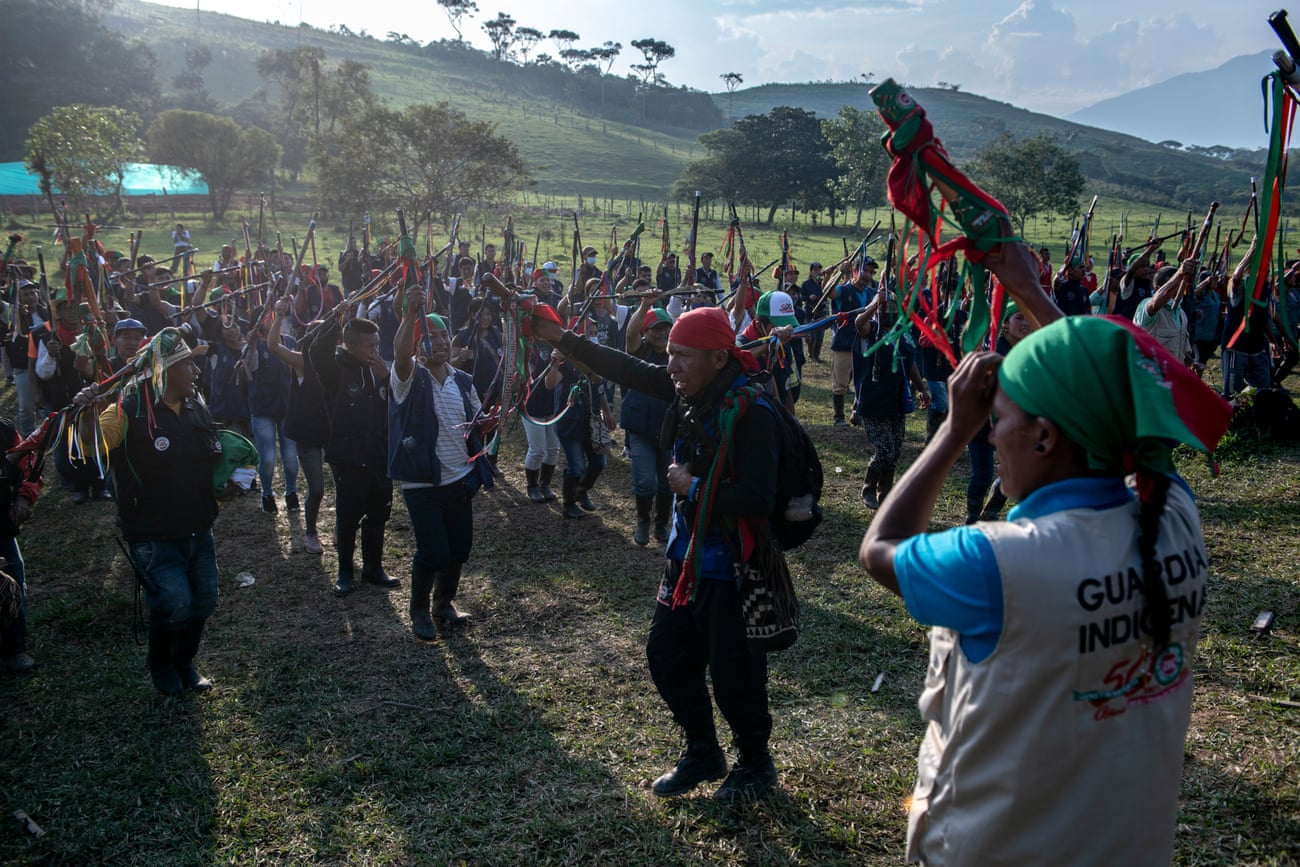
-
José Albeiro Camayo, centre, one of the leaders of the Indigenous Guard, was shot dead by an armed group linked to drug trafficking in January 2022
At Cucuñame’s funeral at a hilltop cemetery, children raised and hugged one another by his grave, decorated with green and red paraphernalia. The valleys around are full of sprawling coca plantations – highlighting the absence of any state presence.
President Iván Duque’s office did not reply to the Guardian’s questions, sending instead a link to a website outlining how at-risk individuals could apply for a security scheme.
In Toribío, lessons begin at 9am at the Saturday school for children aged five to 15. In the playground, a Nasa shaman teaches them a sacred ritual to give thanks to mother Earth. With a leafy branch, he douses the children with a tincture of aromatic plants to keep them safe.
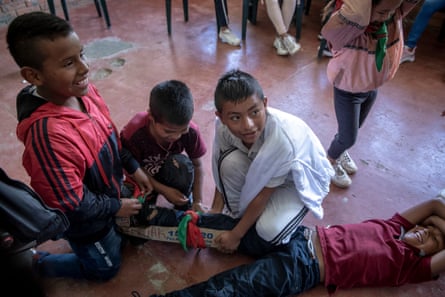
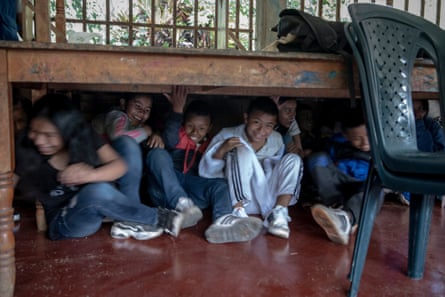
-
The children are taught how to stabilize a leg injury using whatever resources are available, left, and find shelter under a table during an exercise simulating a possible bomb explosion or gunshot attack
Role plays on how to carry a wounded person to safety, as well as how to shelter during gunfire are acted out.
“This could be very useful at any stage in their lives,” says Edgar “Tumi” Tumiña, 42, a senior guard member who has witnessed multiple near fatal attacks and travels with a security team.
Tumi runs the school and is in constant fear for his life, sleeping in a different place every night. Dissident groups resent the guard’s efforts to defuse and remove their landmines.
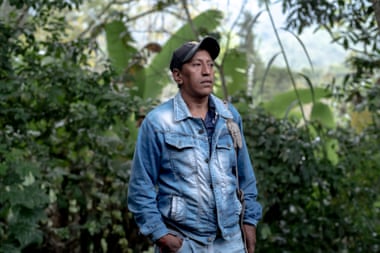
“All of these children have got used to conflict from a very young age. It has become so common for people in these parts to hear a bomb explode or a gunfight and to go out and see where it came from,” he says. “We teach them not to do that, and to protect themselves and others.”
Camayo Díaz, of Textile for the Defense of Life, says 272 children were recruited into armed groups in 2021.
Elizabeth Dickinson, an analyst at the International Crisis Groupsays: “What the dissidents have done – tragically with some success – is that they have made the argument that they’re the only opportunity in town, and particularly for youths … working with the dissidents is an employment opportunity and a way towards social status, it’s power over your peers.”
The pandemic allowed the dissidents to easily reach young people, adds Dickinson.
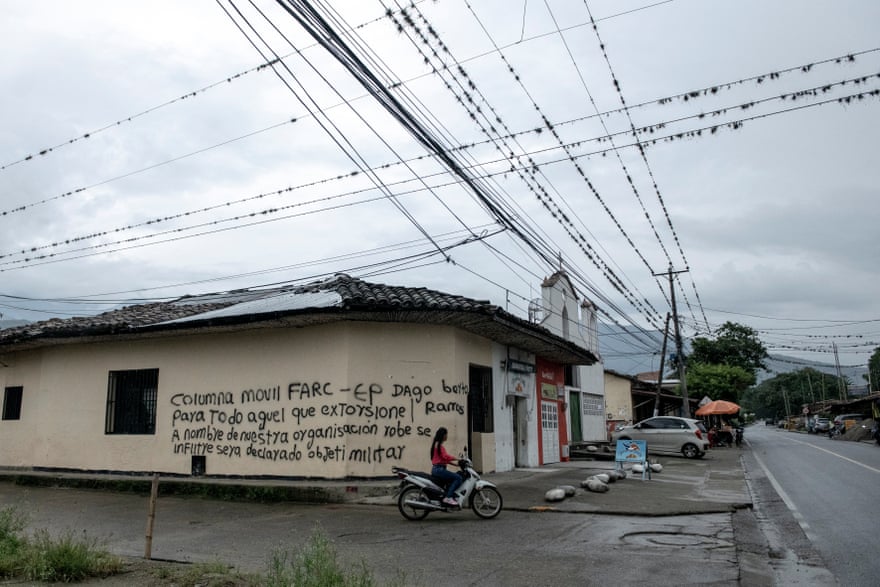
-
A few miles from Toribío, graffiti at the entrance to a village is signed by the armed dissident group, the Dagoberto Ramos Mobile Column
“Through soccer clubs, or by convening parties, you can really gain a lot of social capital, which is what they did successfully and lured young people into joining these groups,” she says.
Adriana Pazu, a leader at the guard’s school in Toribio, has received threatening messages from armed groups.
“The truth is that the situation has become very complicated. Many of the leaders are now afraid to continue working with the training, because many have lost their lives because of this work.
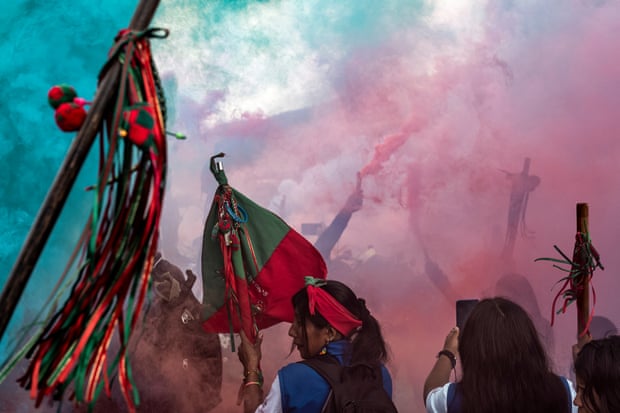
“For me, it is a source of strength and gives me more courage to continue fighting for these children, because we must not show weakness or fear to people who want to kill us,” Pazu says, holding her red and green baton.
“We have to show them that we, the Indigenous Nasa people, are full of courage and the more united we are, the more we can keep going.”
Sign up for a different view with our Global Dispatch newsletter – a roundup of our top stories from around the world, recommended reads, and thoughts from our team on key development and human rights issues, delivered to your inbox every two weeks:
Sign up for Global Dispatch – please check your spam folder for the confirmation email
www.theguardian.com
George is Digismak’s reported cum editor with 13 years of experience in Journalism